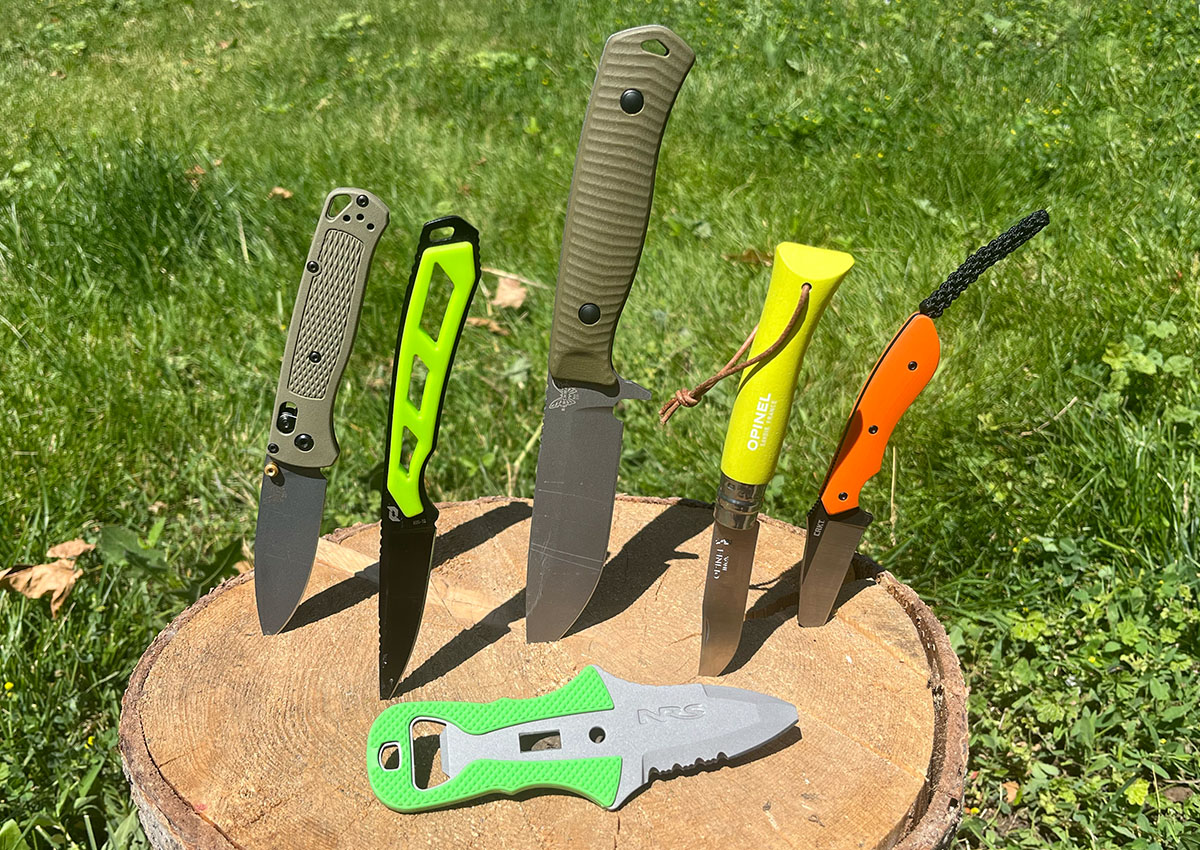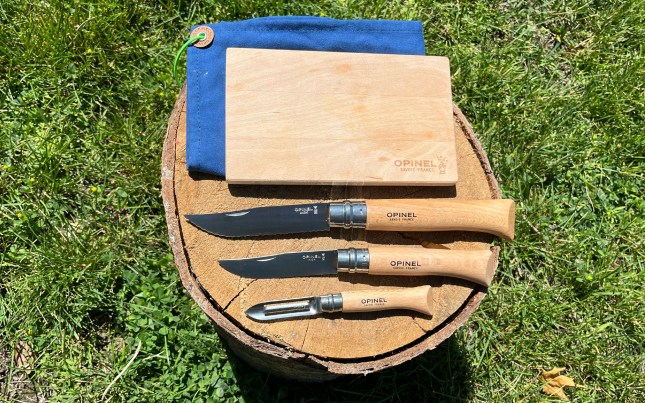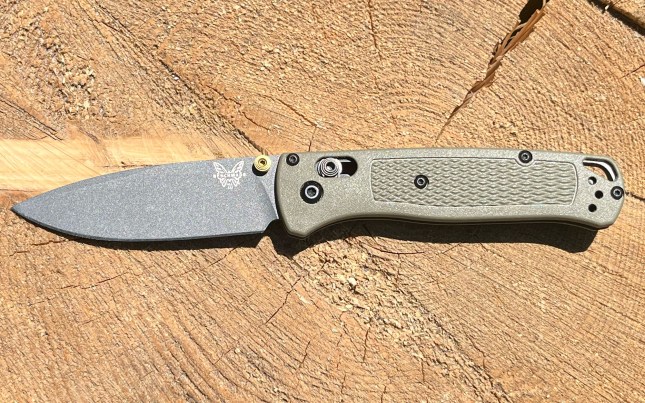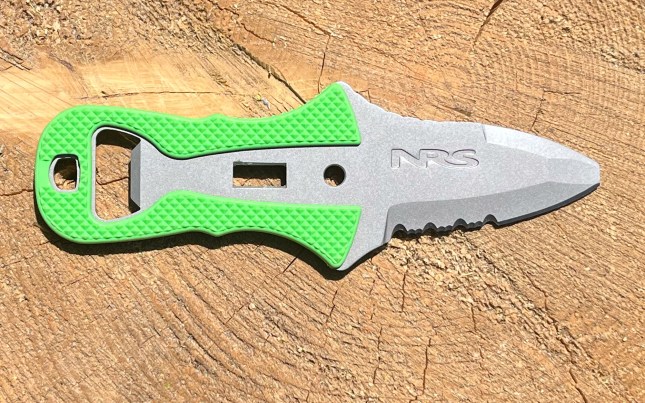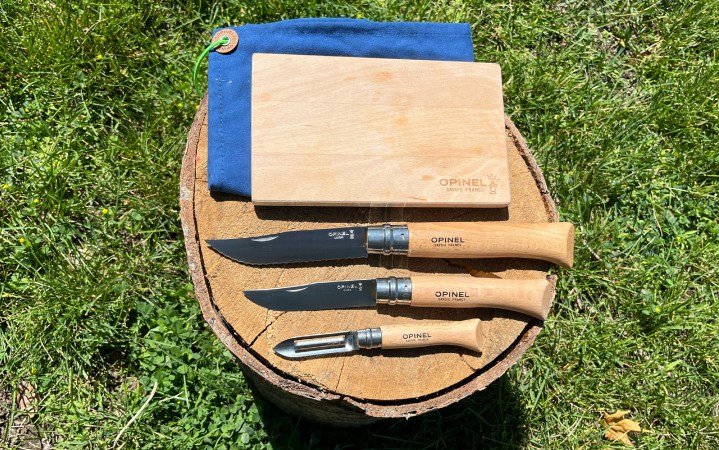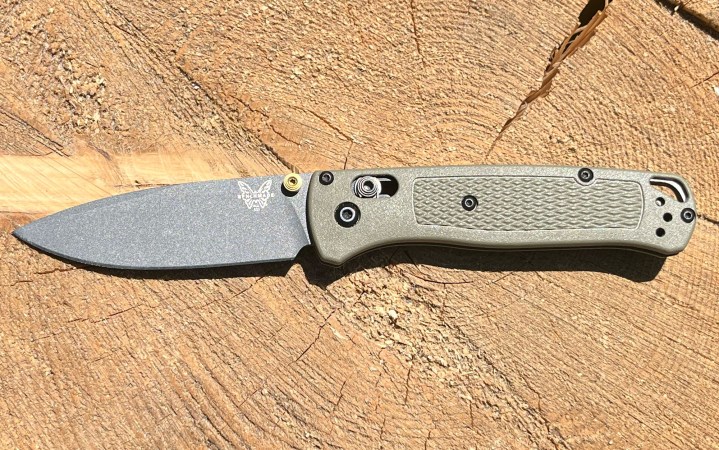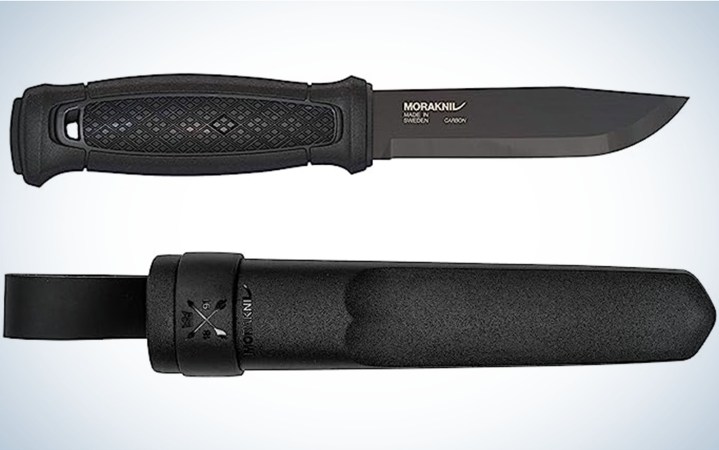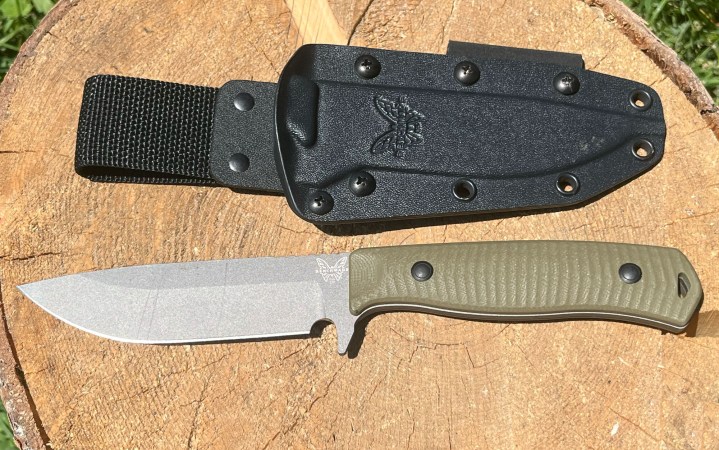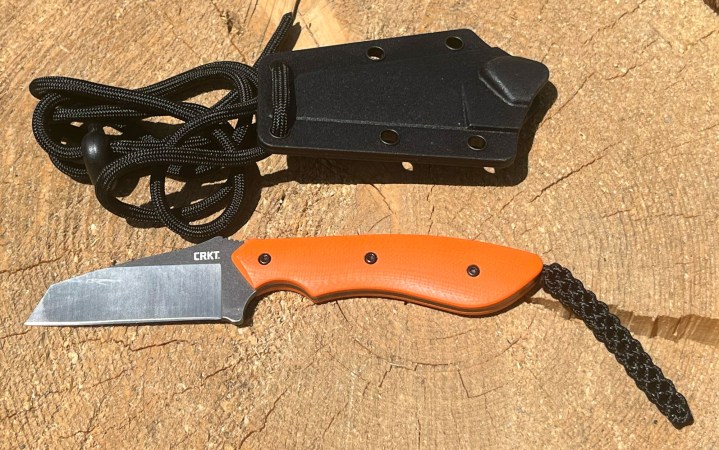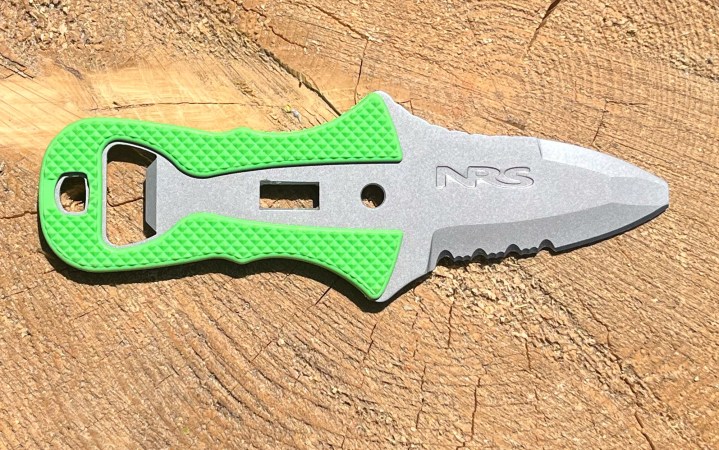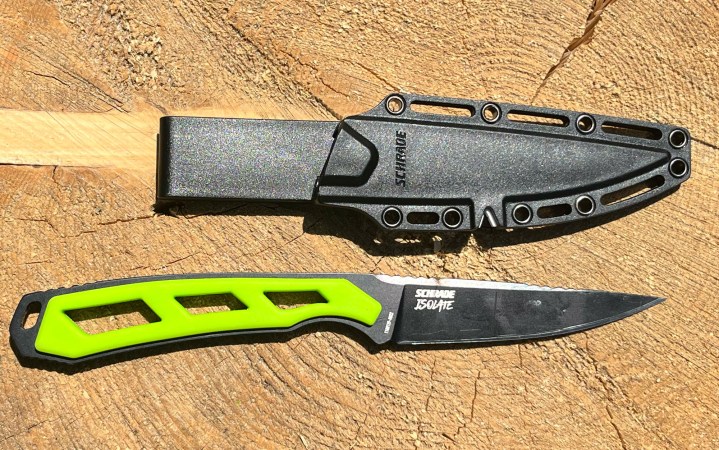We may earn revenue from the products available on this page and participate in affiliate programs. Learn More ›
From cooking dinner to a true emergency, your camping knife is an essential piece of gear. A quality knife can last years, even a lifetime with proper care. They’re useful for cooking, first-aid, making a fire, hunting, emergencies, and just whittling marshmallow sticks by the campfire. I tested a variety of knives from reputable brands to help you find the best camping knives for your kit.
- Best for Cooking: Opinel Nomad Cooking Kit
- Best Lightweight: Benchmade Bugout
- Best for Survival: Morakniv Garberg
- Best Fixed Blade: Benchmade Anonimus
- Best Small Fixed-Blade: CRKT S.P.I.T.
- Best for Rafting: NRS Co-Pilot
- Best Budget Lightweight Fixed-Blade: Schrade
How I Chose the Best Camping Knives
I selected a range of sizes and styles from top knife manufacturers to test. I took these knives camping, backpacking, and kayaking to determine how their blade styles and grips performed in rugged conditions. Over the course of testing, I used them to chop up dinner, create kindling, generate sparks with a ferro rod, cut zip ties, pop blisters, field dress a deer, and more. Depending on your typical usage, camping style, and budget, there’s a camping knife for you on this list.
Best Camping Knives: Reviews & Recommendations
Best for Cooking: Opinel Nomad Cooking Kit
Best for Cooking
Opinel Nomad Cooking Kit
Key Features
- Includes: Cleaning/carry cloth, 8 x 5 cutting board, No. 12 serrated, No. 10 corkscrew with bottle opener, No. 6 folding peeler
- Blade Length: 4.73 inches, 3.92 inches, and 2.36 inches
- Overall Length: 11.20 inches, 9 inches, and 6.2 inches
- Blade Steel: Stainless
- Grip Material: Beech wood
- Weight: 14 ounces
- Price: $89
Pros
- Complete kitchen kit
- Cloth has space to secure knives for easy transportation
- Excellent ferro rod performance
Cons
- Not dishwasher safe
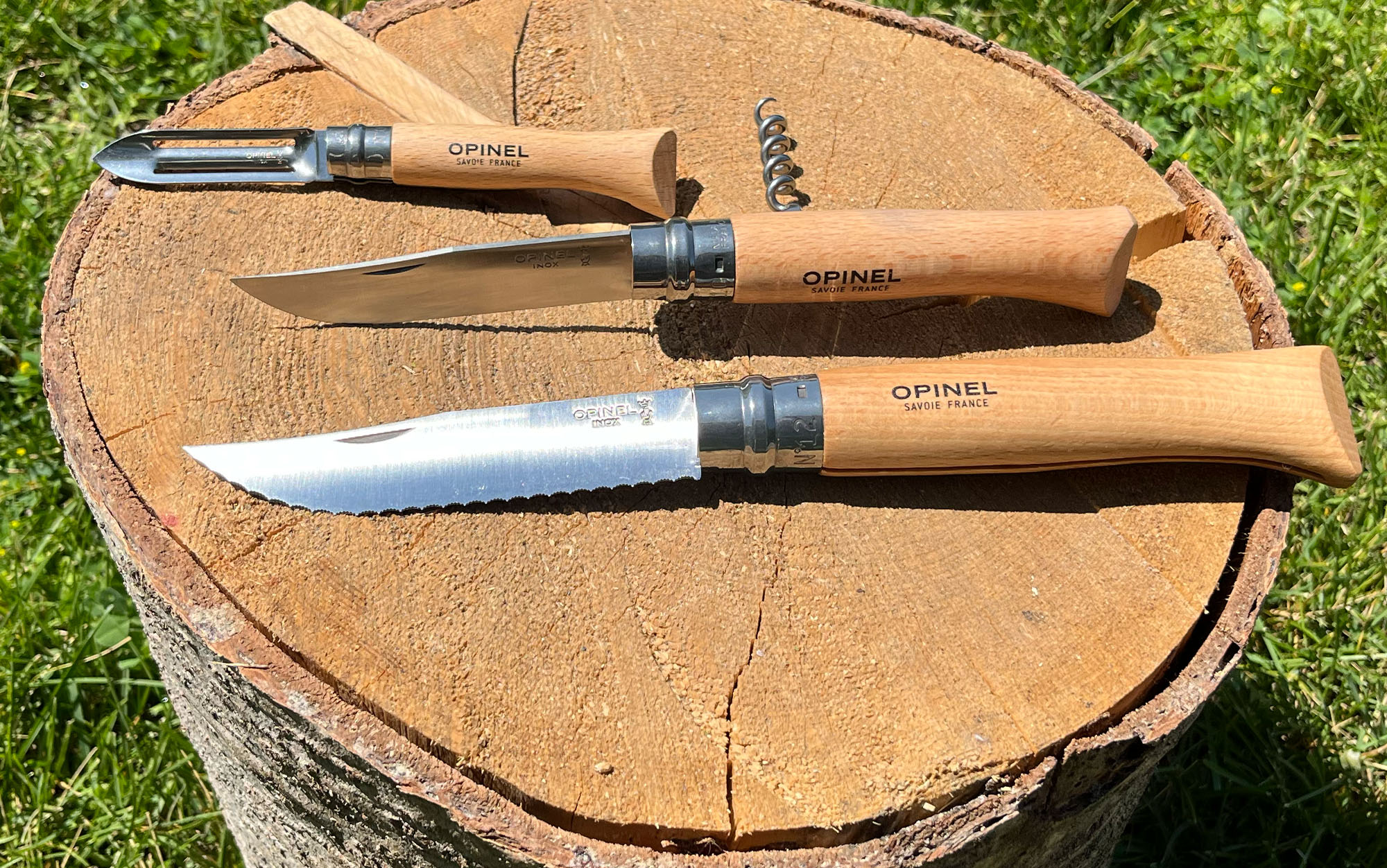
Compact, sleek, and efficient, the Opinel Cooking Kit includes everything you need to prep a gourmet camping meal. The peeler and pair of knives featuring a corkscrew and bottle opener are high quality and compact. The cutting board is a brilliant addition and when it is all wrapped together in the micro-fiber cleaning and carrying towel, it’s easy to keep everything together. The elastic loop on the towel that wraps everything together is also great for hanging and drying.
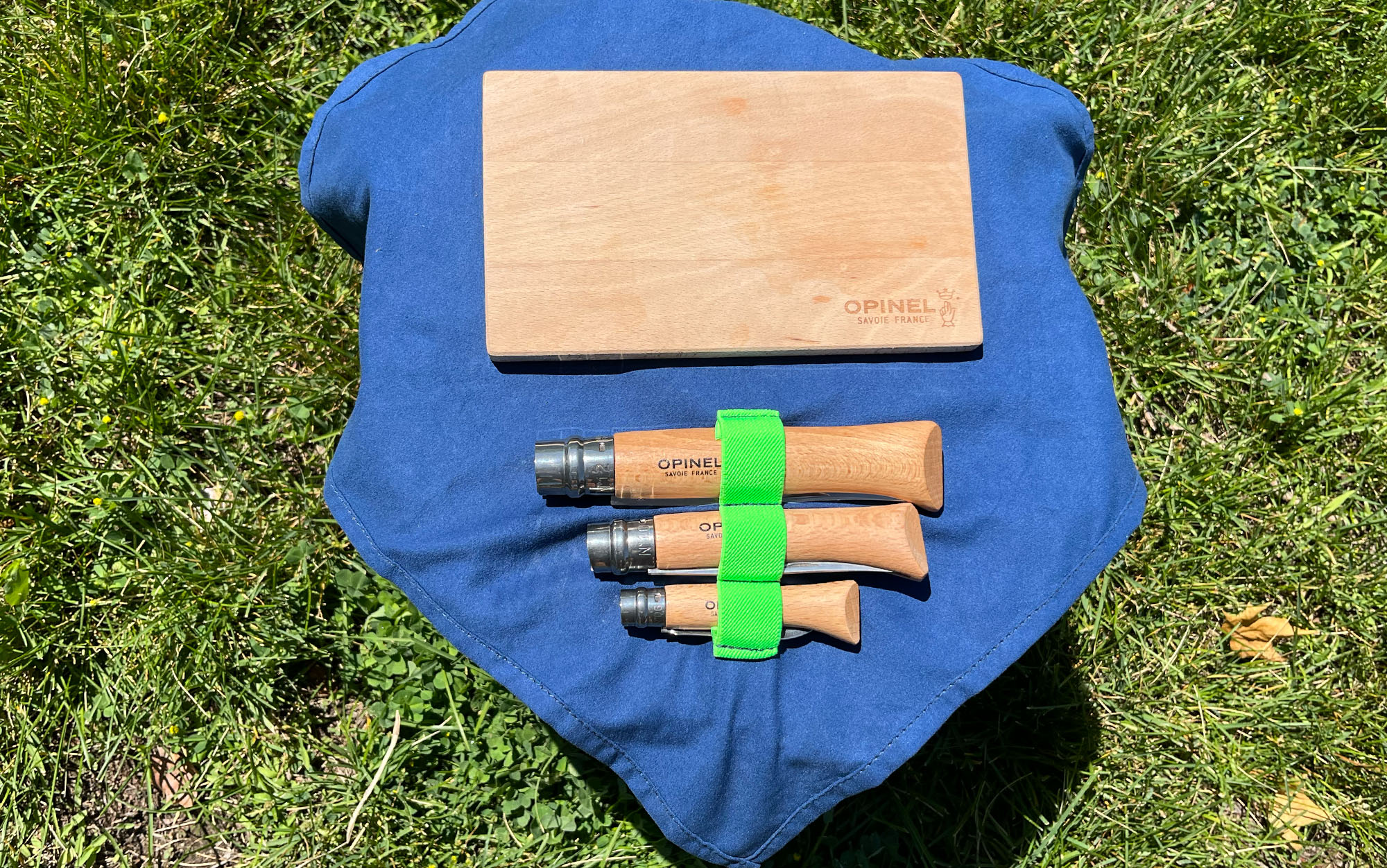
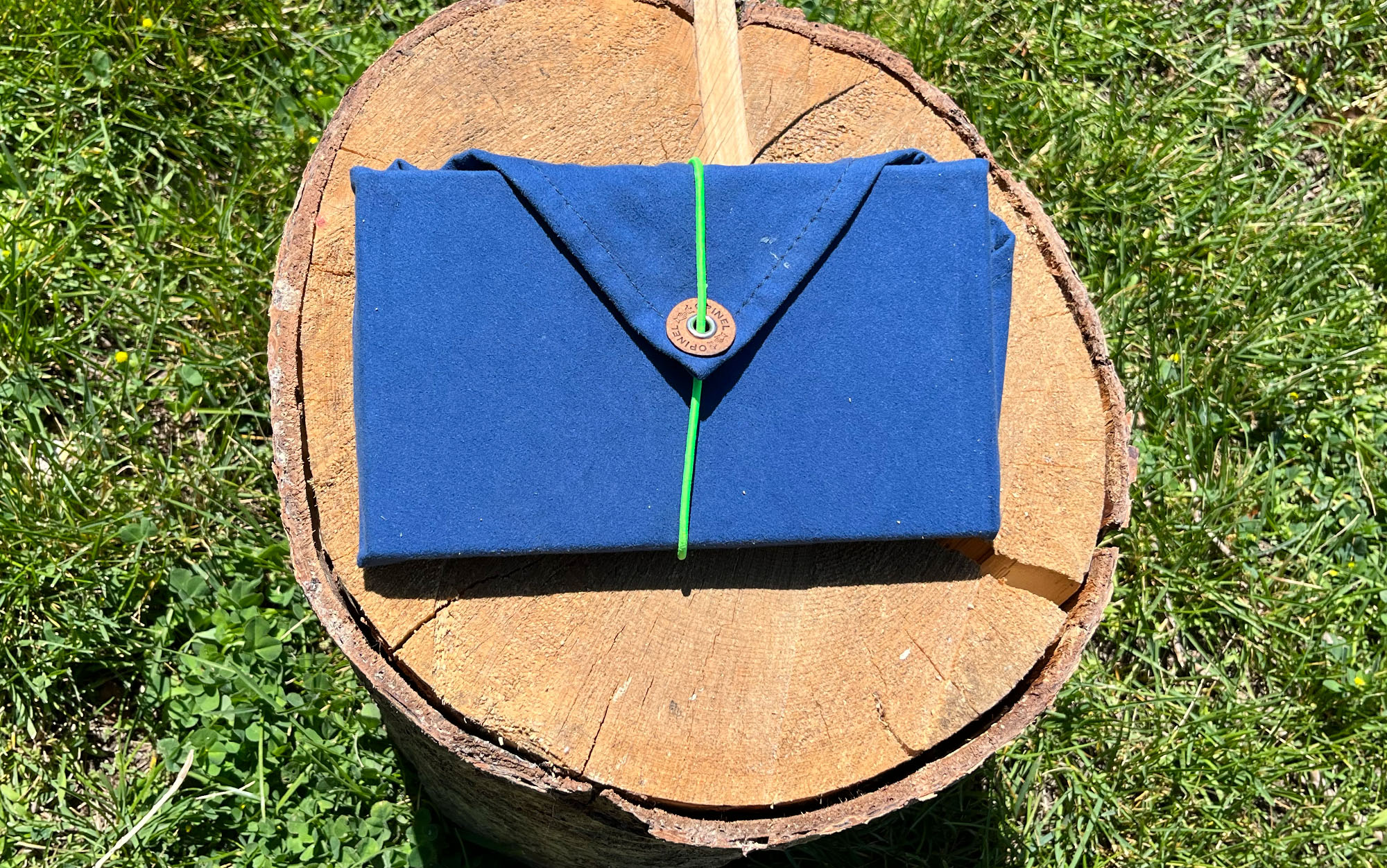
Each knife incorporates the Virobloc system where the silver ring joining the blade to the handle rotates to lock the knife open by blocking its groove for storing. While you’ll likely want to keep your set together, if you’re heading out on a day hike from camp, the No. 10 serves as a handy pocket knife with built-in bottle openers. The spines of Opinel blades excel at creating sparks with a ferro rod and are a favorite for foraging mushrooms thanks to their slim design ideal for precise slicing. If you don’t need the entire kit, Opinel’s handy No. 7, is under $20 and is a highly versatile tool thanks to its durable and simple construction.
Best Lightweight: Benchmade Bugout
Best Lightweight
Benchmade Bugout
Key Features
- Blade Length: 3.24 inches
- Overall Length: 7.46 inches
- Blade Steel: CPM-S30V Stainless Steel (58-60HRC)
- Grip Material: Grivory
- Weight: 1.9 ounces (measured)
- Price: $190
Pros
- Made in the USA
- Lifesharp
- Slim carry clip
Cons
- Not the most comfortable grip
The Benchmade Bugout is the lightest carry knife on this list. While the S.P.I.T. blade is lighter, combined with the sheath, the Bugout pocket knife takes the cake. It’s also the most compact, making it ideal for backpacking. The S30V stainless steel drop point blade is designed for edge retention, corrosion resistance, and durability. It’s not difficult to sharpen like harder steels, though through Benchmade’s Lifesharp program you can send your blade in to be resharpened to a factory edge for free. S30V steel provides a good compromise between utility and corrosion resistance, while still holding an edge.
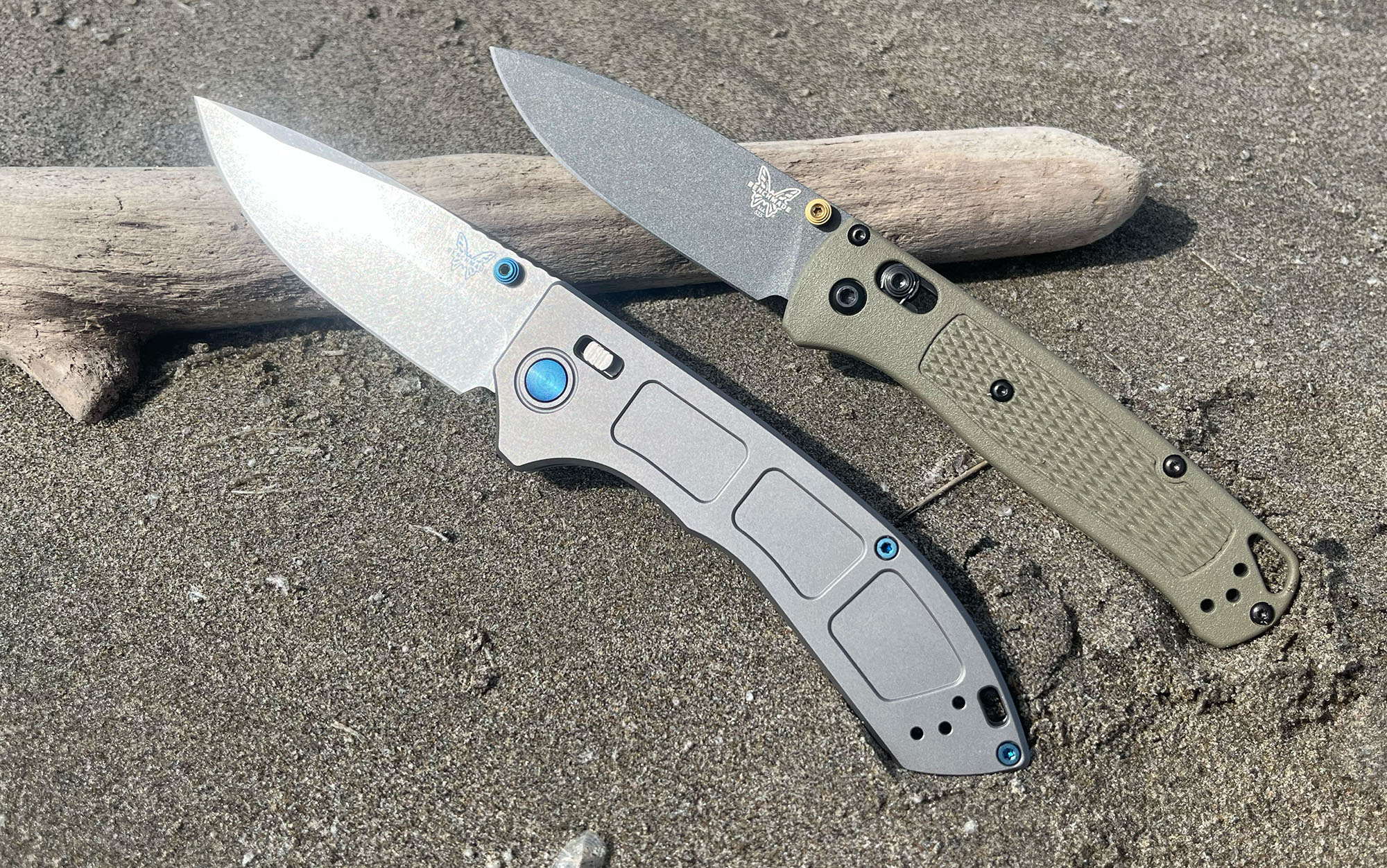
The Bugout also features Benchmade’s Axis lock allowing you to unlock the knife ambidextrously by simply toggling a spring loaded button. No nail breaking or finger pinching underneath the blade to push in a too-tiny metal liner lock is necessary. A light and durable thermoplastic called Grivory makes up the handle. While it isn’t the most comfortable grip, it is lightweight with plenty of traction.
Best for Survival: Morakniv Garberg
Best for Survival
Morakniv Garberg
Key Features
- Blade Length: 4.25 inches
- Overall Length: 13 inches
- Blade Steel: Carbon steel
- Grip Material: Rugged polyamide
- Weight: 9.6 ounces
- Price: $100
Pros
- Affordable
- Full tang
- A survival knife that can do bushcraft tasks as well
Cons
- Heavy
Maybe there’s something in the water in the industrial town of Mora, Sweden; but the blades that have been coming out of that city have become a bushcraft tradition. There’s just been one little problem over the years. Customers have been crying for thicker tangs and more robust blade construction. The Morakniv company answered this call, creating the Garberg — our pick for the best survival knife. With full tang construction, this 9-inch carbon steel knife has a 4.3-inch blade and weighs in at a beefy 9.6 ounces. While the knife profile, grind and handle swell may superficially resemble smaller Morakniv products like, the Morakniv Companion, this full-bodied knife is nothing like its puny cousins.
The black polyamide (plastic) handle could be a little rough without gloves, and it is a little jarring when doing impact work. Still, the Morakniv Garberg is ultra-durable and the black Multi-Mount sheath offers many options for carry. The MOLLE-compatible kit gives the user many different carry options. It also remedies a classic Morakniv problem: sheath retention. The Multi-Mount kit includes a strap that can hold the knife securely in its sheath. My initial tests went very well, and after several seasons of hard use, the Garberg is still holding up great, and it’s my pick for the best survival knife that excels at bushcraft tasks. —Tim MacWelch
Read MacWelch’s best survival knives review to see other great options.
Best Fixed Blade: Benchmade Anonimus
Best Fixed Blade
Benchmade Anonimus
Key Features
- Blade Length: 5 inches
- Overall Length: 9.83 inches
- Blade Steel: CPM-Cruwear (63-65 HRC)
- Grip Material: G10
- Weight: 5.9 ounces (measured), 8.6 ounces (measured with sheath)
- Price: $310
Pros
- Made in the USA
- Lifesharp
- Full tang
Cons
- Polymer sheath
Anonimus is made from the one of the best steels for toughness. This toughness matched with a full tang means you can do everything from batoning wood to making kindling. However, this knife was more difficult to get sparks out of with the ferro rod due to the blade coating, though after a few tries I succeeded. There is effectively placed jimping at the base of the spine for a solid handle when carving. The sharpening choil is sizable for indexing your sharpening stone. You can even open a bottle with it (carefully).
The distal taper stays thick up to the point giving it more strength at the tip and reducing the risk of snapping. The only durability concerns I have are with the sheath. The thin polymer attachment point seems breakable and the belt loop doesn’t unsnap for easy on and off. If you want to attach it to the hipbelt of a backpack instead, you may struggle to fit the buckles through.
Best Small Fixed-Blade: CRKT S.P.I.T.
Best Small Fixed-Blade
CRKT S.P.I.T.
Key Features
- Blade Length: 2.29 inches
- Overall Length: 5.48 inches
- Blade Steel: High carbon stainless steel (8Cr13Mov)
- Grip Material: G10
- Weight: 1.9 ounces (measured 2.6 ounces with sheath)
- Price: $44
Pros
- Lightweight
- Multiple mounting options
- Versatile tanto blade
Cons
- Small blade is best for small jobs
CRKT’s Small Pocket Inverted Tanto has a small but sharp blade with a good sized handle for proper leverage. The high carbon stainless steel is easy to sharpen and decent for cutting though I wouldn’t apply too much prying pressure. The precision tip is where the S.P.I.T. excels, ideal for scoring or popping blisters. The handle is comfortable and I love that the jimping passes the base of the blade and extends down the handle for versatile grips. The thermoplastic sheath comes with a lanyard that can be rewoven into multiple attachment points for a variety of mounting options. There is also a lanyard of braided paracord for a better grip when removing the knife from the sheath.
This is a lightweight and compact camping knife that can slice cheese, create kindling, and handle other small jobs. The tanto is a versatile blade style featuring a squared point leading to the tip. The S.P.I.T. also excelled in the ferro rod test. I’d recommend this knife for backpacking or as a convenient and stowable fixed blade.
Best for Rafting: NRS Co-Pilot
Best for Rafting
NRS Co-Pilot
Key Features
- Blade Length: 2.25 inches
- Overall Length: 5.75 inches
- Blade Steel: 420 HC stainless steel
- Grip Material: Glass-reinforced polypropylene with TPR over mold
- Weight: 4.6 ounces
- Price: $45
Pros
- Safety tip
- Smooth and serrated blade
- Comfortable grip
Cons
- Blunt tip means limited scoring or stabbing ability
The NRS Co-Pilot is designed for water sports and rescue. If you’re in an inflatable vessel, wearing an inflated vest, or flying a delicate sail or kite, the blunt safety tip is designed to avoid puncturing yourself, your gear, or someone else. The blade is also only sharpened on one side to give you more leverage when sawing or cutting and reducing the risk of injury in a high-intensity rescue situation. The 420 stainless steel is corrosion resistant, but if you typically recreate in salt water, try the NRS Titanium Co-Pilot. The serrated part of the blade is great for sawing through ropes, bread, and more and the smooth edge slices nicely.
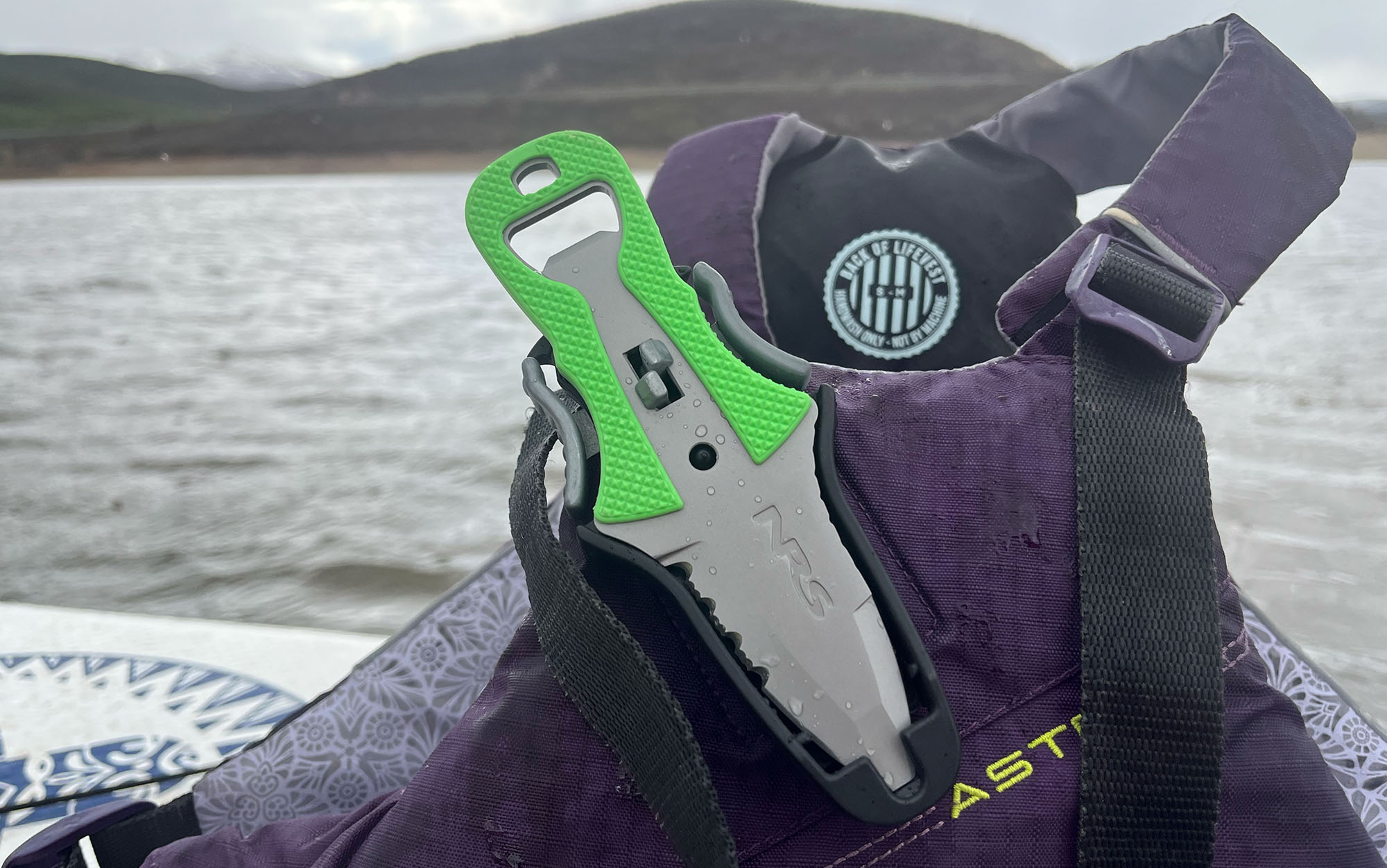
A rubber grip wraps around an ergonomic handle for the most comfortable grip on this list, even in wet conditions. The unique sheath traps your blade securely and only once you squeeze both sides are you able to pick up the knife. The sheath’s clip attaches firmly to a PFD lash tab for convenient and unobtrusive access right at your chest. Built into the handle are a bottle opener and oxygen tank valve wrench. The safety tip also doubles as a flat head screwdriver, helpful for boat tuning.
Best Budget Lightweight Fixed-Blade: Schrade
Best Budget Lightweight Fixed-Blade
Schrade
Key Features
- Blade Length: 4 inches
- Overall Length: 8.5 inches
- Blade Steel: AUS-10
- Grip Material: Overmold
- Weight: 2.8 ounces
- Price: $26
Pros
- Lightweight
- Full tang
- Sheath includes a sharpener
Cons
- Flimsy sheath
I field dressed my first deer with this budget blade, and couldn’t have been happier. The sharp precision point and dual segments of jimping along the spine give ample control. The thumb choil is placed well and the Thermoplastic Rubber handle provides a good grip even if your hands are wet and slippy. There is additional jimping at the butt of the knife for better grip when using more leverage to skin or gut a harvest.
The blade did dull eventually, but the built-in sharpener on the sheath makes it easy to refresh your blade mid-job. I’ve taken this knife backpacking thanks to its light weight and good sized blade. The sheath’s clip is rather flimsy but has done the job so far. Affordable and efficient, I’d recommend this knife for hunting birds or small game or as a lightweight backup.
Things to Consider Before Buying the Best Camping Knives
Dangling 40 feet in the air on a 70-foot rappel, I looked down to see half of my braided hair stuck inside the belay device responsible for slowly lowering me to the ground. With no other option, I had to retrieve my off-brand pocket knife from the hipbelt pocket of my backpack with one hand, while keeping ahold of the rope lest I continue to sink lower, feeding more of my hair into the device, or worse falling onto the slickrock below. I used the budget knife to hack my hair loose before lowering myself to safety. This untimely haircut could have been a lot worse had I not had a camping knife easily accessible on my person, even if it was a crappy one. All to say that the best camping knife is the one you have with you. But why not make it a good one?
Blade Length
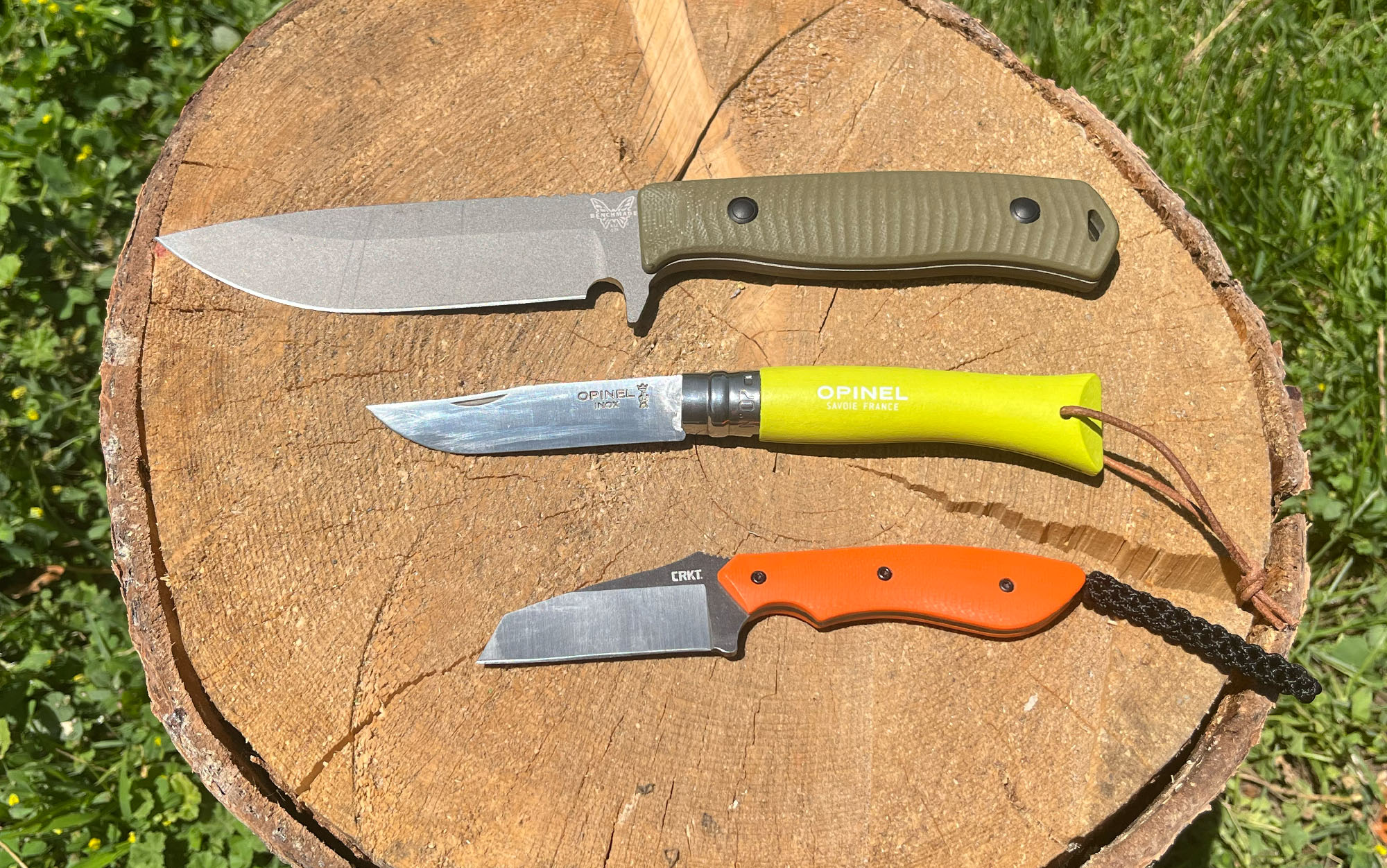
The length of your blade will depend on your typical usage. If you’re using this knife in a survival or bushcraft setting, then blades in the 4- to 8-inch range like the Morakniv Garberg or Benchmade Anonimus will give you more cutting power and leverage. If you’re backpacking or backpack hunting, a shorter blade like the CRKT S.P.I.T. at just 2.3 inches will likely be enough blade with less ounces.
Blade Steel
The steel used to craft your best camping knife varies. The NRS Co-Pilot steel is characterized by corrosion resistance while the Benchmade Anonimus is one of the toughest steels. The Benchmade Bugout will retain an edge better than the CRKT, but both are easily resharpened. Opinel’s steel isn’t as tough, but it’s durable and sprays sparks with a ferro rod.
Grip
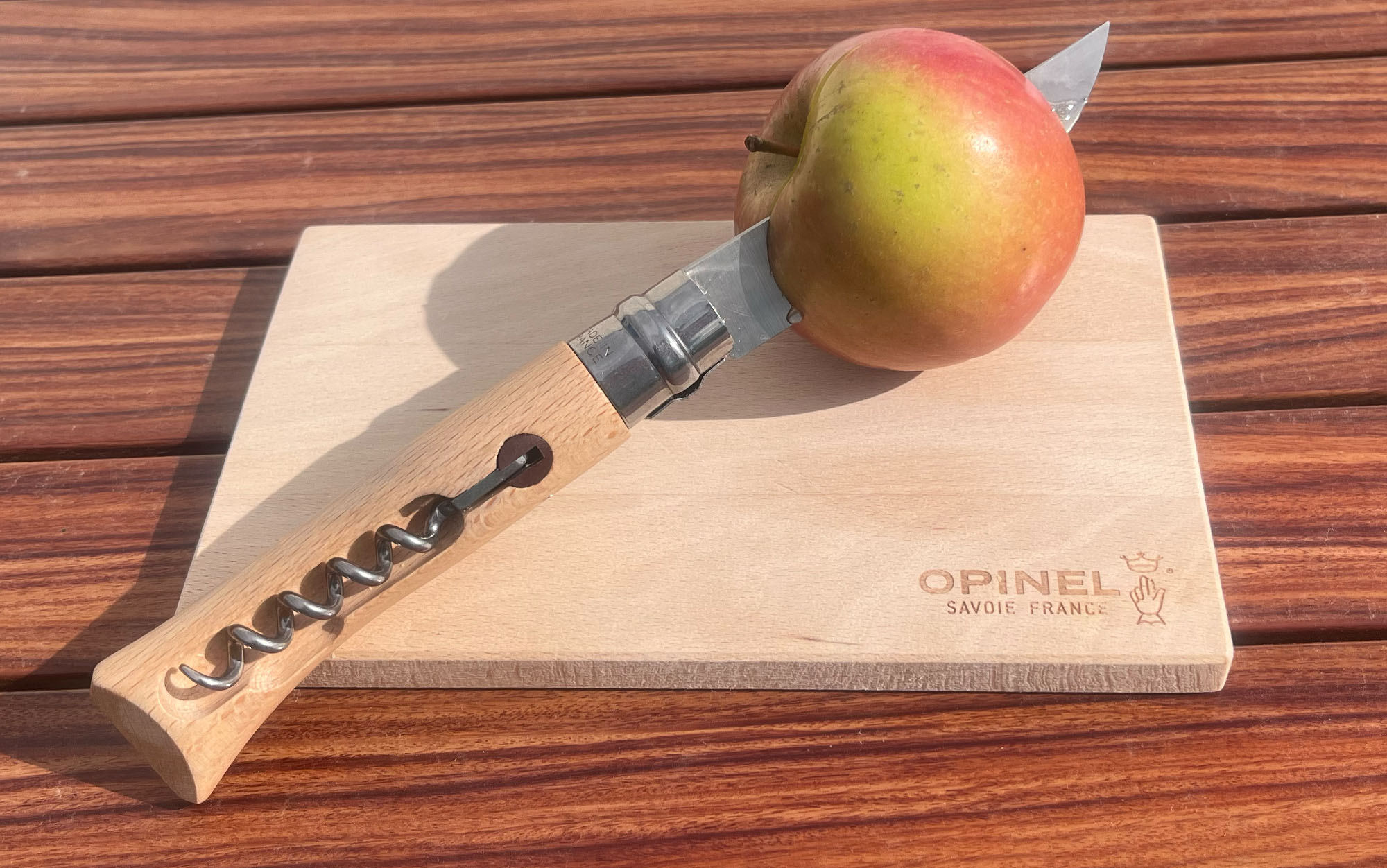
The grip isn’t just aesthetic when it comes to camping knives. Your hands could be gritty, wet, or otherwise compromised and a good grip should let you keep control over your knife anyway. You’ll also want to avoid any hot spots or possible blister points during a difficult task, so take comfort and traction into account when selecting a camping knife.
FAQs
The correct way to store a camping knife is clean, dry, and sheathed. Do this after every trip and it should last you for years to come.
Use one of the best knife sharpeners to keep your blade sharp and at the ready. Benchmade also offers Lifesharp which lets you send in your knife to be sharpened for free.
The best blade length for a camping knife depends on what you’re using it for. If you’re batoning, you’ll likely want a larger blade to make the work easier. If you’re making a gourmet camp meal, a selection of blade lengths might be best like the Opinel Cooking Kit’s three different tools to choose from.
Why Trust Outdoor Life?
Since 1898, OL has been a leading authority in testing and reviewing hunting gear, fishing tackle, guns and shooting equipment, and much more. We have more than a century-long history of evaluating products, and we’re now bringing that expertise to online reviews. Our editors are experienced outdoorsmen and women, and most importantly, we’re trained journalists. We prioritize field testing and objective data when reviewing products. We conduct interviews with gear manufacturers and engineers as well as outdoor experts so that our readers have an understanding of how and why a product works—or doesn’t.
Advertising does not influence our gear reviews and it never will. While we always focus our coverage on standout products—because we want our readers to be aware of the latest and greatest gear—we also cover the flaws and quirks of any given product.
Final Thoughts
The best camping knives are essential for a fun and safe camping experience. There’s a knife for everyone on this list from bushcraft to a rafting trip to backpacking. Think about the times your gas station pocket knife has failed you or the moments you thought man I wish I had a knife, and take those into account when investing in your camping knife.
- Best for Cooking: Opinel Nomad Cooking Kit
- Best Lightweight: Benchmade Bugout
- Best for Survival: Morakniv Garberg
- Best Fixed Blade: Benchmade Anonimus
- Best Small Fixed-Blade: CRKT S.P.I.T.
- Best for Rafting: NRS Co-Pilot
- Best Budget Lightweight Fixed-Blade: Schrade
